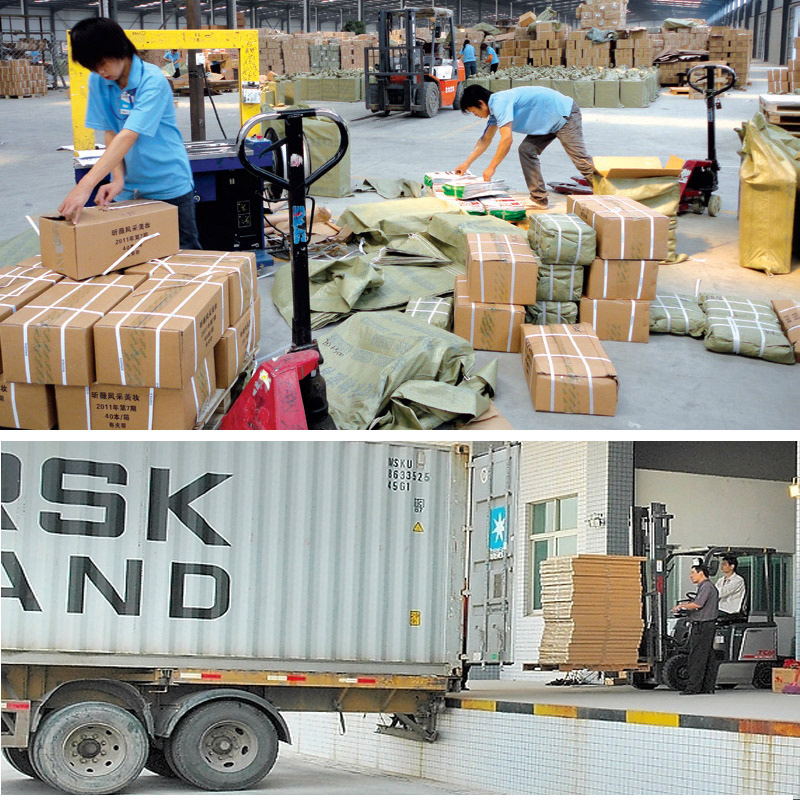Navigating Customs with Consolidated Shipments from China: A Complete Guide for EU & US Importers
Introduction
Importing goods via consolidated shipments—where multiple supplier orders are combined into a single container or air pallet—is a cost-effective and scalable strategy for European and North American businesses. But customs compliance can be a maze, with complex rules varying between regions. This guide unpacks everything you need to confidently clear customs, minimize delays, and streamline your logistics chain.

1. Understanding Customs Basics for Consolidated Freight
Consolidated shipping (also known as LCL or freight consolidation) involves multiple shippers combining cargo into one container, which is split again upon arrival for customs and delivery.nextsmartship.com+5Freightos+5Supplyia+5flexyfreight.com+1vervologistics.com+1
Key Customs Considerations:
- Documentation: One master commercial invoice, packing list, certificate of origin, and bill of lading covering all consolidated commodities.
- Duty Calculation: Determined per HS code, which must be accurately classified for each item.
- Customs Declarations:
- EU: Use the Single Administrative Document (SAD) to declare imports from non-EU countries.Vogue Business维基百科
- US: A formal customs entry is required, especially after the end of the de minimis exemption for shipments under $800.Vogue Business
- Customs Broker: Engaging a licensed customs broker is essential to ensure compliance and accuracy.
2. Customs Process for Consolidated Shipments: Step by Step
- Pre-Departure Documentation Collection
Suppliers must provide full HS codes, item values, weight, and product descriptions ahead of consolidation. - Master Document Creation
Consolidator compiles a single invoice, packing list, and bill of lading covering all items. - Customs Submission & Filing
- For EU: Submit SAD at entry point (e.g., Rotterdam).
- For US: Submit formal customs entry; duties apply regardless of value.Vogue Business+2FreightAmigo+2FreightAmigo+3cnxtrans+3SendfromChina.SFC+3FreightAmigo
- Customs Inspection & Duty Payment
Physical inspections may be triggered—accurate documentation and harmonized HS codes reduce risk. - Deconsolidation & Clearance
After customs, shipments deconsolidate at a local warehouse before delivery distribution. - Last-Mile Delivery
Cleared goods are dispatched via domestic carriers or DDP fulfillment solutions.
3. Key Differences: EU vs. US Customs for Consolidated Freight
European Union (EU)
- SAD / C88 Form required for each import.
- EORI number is mandatory for EU importers.
- Shipments ≤ €150 (IOSS) exempt VAT if compliant; longer routes require standard VAT processes.
- Certain goods need CE marking or specific certificates (e.g., REACH compliance).
United States (US)
- End of de minimis exemption: Now all shipments from China/HK, regardless of value, need full entry and duties.nextsmartship.com+10Freightos+10developer.ups.com+10chrobinson.com+5flexyfreight.com+5Freightos+5dimerco.com+3Vogue Business+3vervologistics.com+3维基百科FreightAmigo
- Duty rates depend on HS codes; customs brokers must file with CBP.
- Entry type varies by cost, weight, and origin/destination.
4. Optimizing Customs Clearance in Consolidated Logistics
| Strategy | EU Approach | US Approach |
|---|---|---|
| Use of IOSS/OSS | Pay VAT centrally for B2C <$150 imports | N/A |
| Single Customs Entry | One SAD per consolidated container | One formal entry per consolidated shipment |
| Tariff Accuracy | Harmonized HS codes – CE compliance required | Correct HTS code classification and valuation |
| Documentation Prep | Batch supplier docs for faster filing | Bundle invoice including all consigned details |
| Broker Engagement | Use brokers with EORI/IOSS experience | Use brokers adept at CBP consolidated entries |
| Handling Delays | Pre-alert to customs for priority handling | Use Trusted Trader programs for faster clearance |
5. Common Customs Pain Points & How to Avoid Them
- Incorrect HS Classification – leads to duty miscalculation. Mitigate via pre-classification audits.
- Missing Commodity Certificates – especially for electronics or textiles. Ensure CE/Safety compliance.
- Insufficient documentation volume – customs may require detailed breakdowns for each SKU.
- Broker Miscommunication – always verify SAD entry vs. broker records to catch discrepancies.
- Policy Updates – stay informed—e.g., the US de minimis policy shift has affected documentation norms.Vogue Businessflexyfreight.com+1维基百科
6. Real-World Strategy for EU & US Importers
Scenario: Import 5 SKUs from China via consolidated sea shipment to EU/US.
EU Compliance:
- Supplier documents each SKU with HS code, unit value.
- Consolidator prepares one master invoice, aligns with IOSS thresholds.
- Use EORI and SAD for clearance. VAT pre-paid via IOSS.
US Compliance:
- Same documentation prep; use broker to file consolidated entry.
- Duties apply for all shipments—even low-value.
- Pre-classify via a customs broker to reduce delays.
7. Technology & Automation to Streamline Customs
- Digital Customs Filing Tools – automatic generation of SAD or broker-ready customs entries.
- Tracking Systems – monitor status from consolidation center to customs to destination.
- Duty Calculators – estimate landing cost and taxes pre-clearance.
- HS Classification Tools – AI-assisted classification to ensure tariff accuracy.
Conclusion
Navigating customs for consolidated shipments from China into the EU and US requires precision, advanced planning, and expert documentation. With compliance efforts such as IOSS (EU), formal entry (US), and the correct use of SAD forms coupled with smart freight consolidation methods, you can accelerate delivery, maintain budget integrity, and scale your import strategy confidently.
Let me know if you’d like a downloadable customs checklist or an EU vs. US consolidated customs process infographic tailored for your platform.
